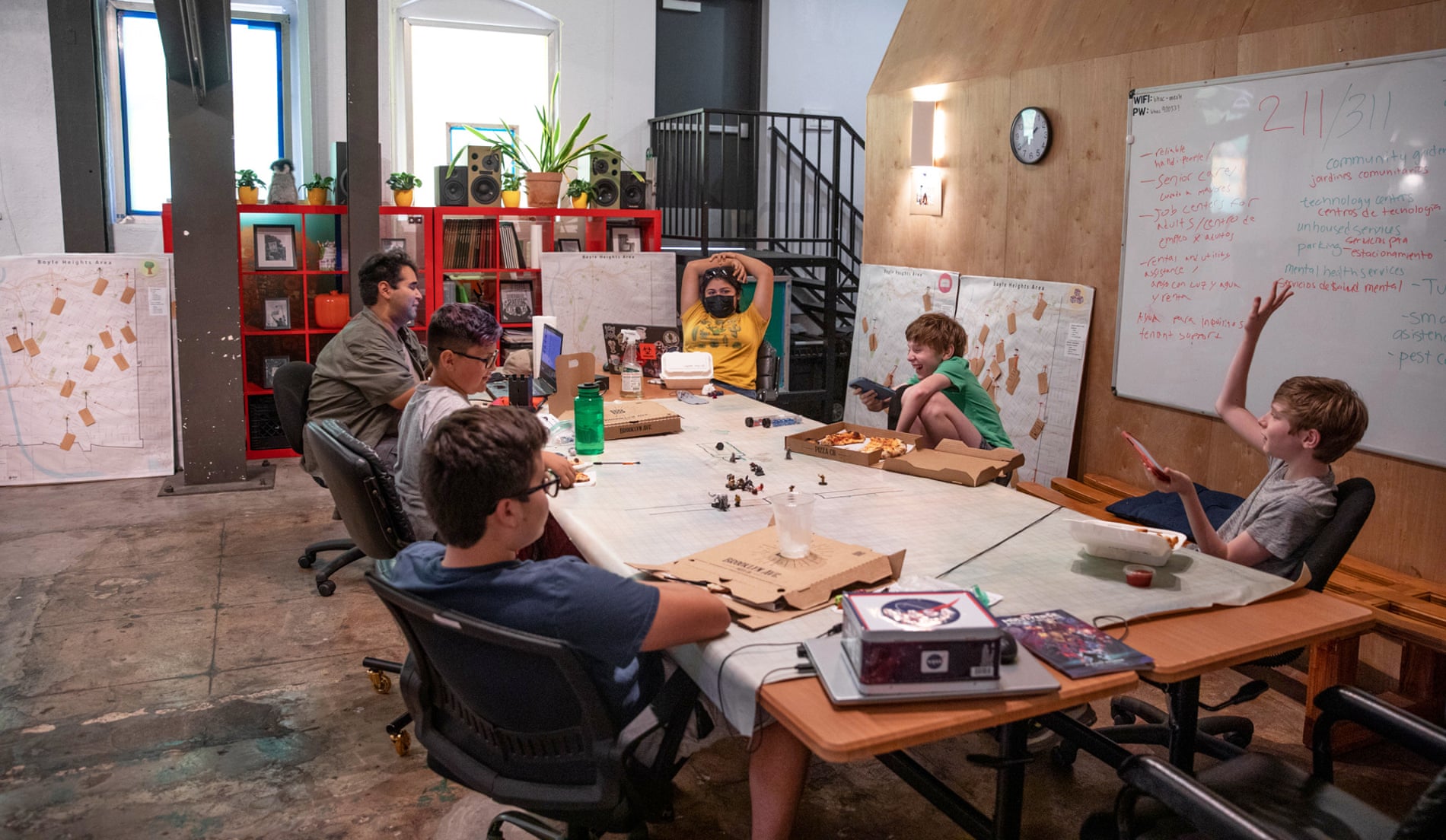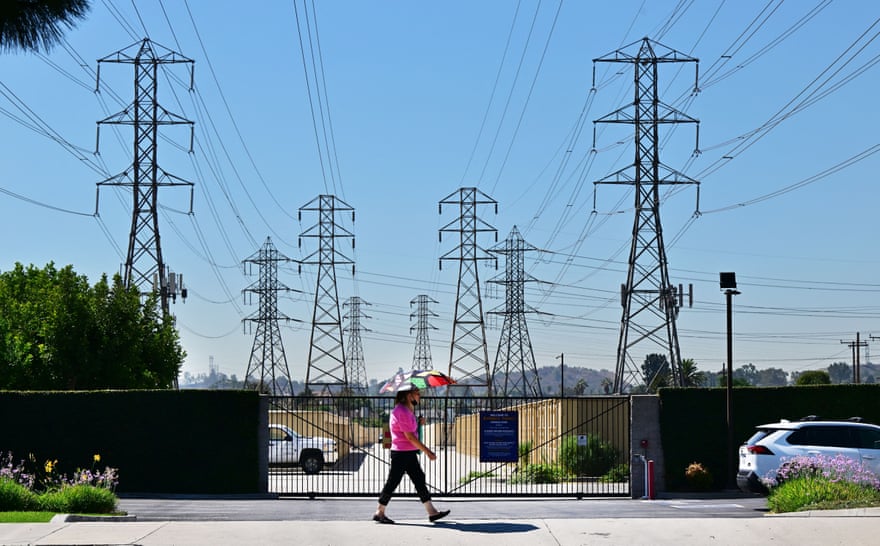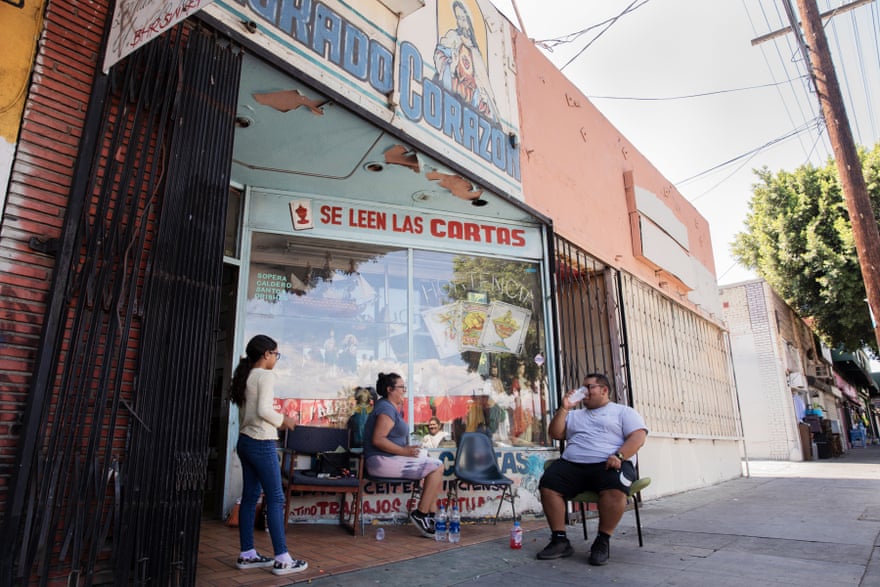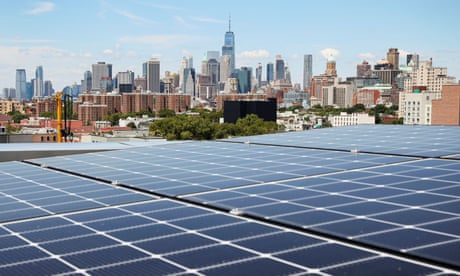
Emergency shelters don’t adequately protect residents. Enter community spaces – centers built to withstand climate disruptions and offer long-term preparedness.
Fri 23 Sep 2022 19.00 AEST
Last modified on Sat 24 Sep 2022 01.43 AESTBut at the Boyle Heights Arts Conservatory, or BHAC, children sat around a table engrossed in the role-playing game Dungeons and Dragons. The thermostat read a cool 72F.
As a chaperone set down pizza lunches, Leo Felix, 11, surveyed his figurines and strategized his next move. When asked what he would be doing on a hot day like this if he weren’t at the BHAC, Felix shrugged. “I’d probably be outside, trying not to die from heat.”
BHAC is a career training center that has been preparing young people for jobs in media arts for 11 years. But recently, BHAC has been taking on a new role in its community – shielding some of east Los Angeles’s most vulnerable residents from extreme weather.
The conservatory is an example of what is known in California and beyond as a “resilience center” – a community space built to withstand climate disruptions like storms and power outages, but that also builds long-term preparedness by offering programs that improve people’s social, physical and economic health so they can withstand crises. Community members have found that temporary, reactive disaster responses like emergency shelters don’t adequately protect residents, and that, especially in disadvantaged communities, climate resilience must also address pre-existing inequities.
As hazards like wildfire smoke, extreme heat and power outages last longer and happen more often, more communities across California are turning to these centers for support, and the state has committed nearly $200m in funding to developing more.

But in this age of compounding climate emergencies, it is still unclear whether enough of this type of resilience infrastructure can be built – and quickly enough – to meet the needs of vulnerable communities.
Beginning in 2012, Kristin Baja originated the concept of resilience centers while working as Baltimore’s climate resilience planner. She was going into neighborhoods to talk to people about emergency planning, but quickly recognized residents were not interested.
“Baltimore has a legacy of racism and intentional discrimination,” Baja said. “It became really clear that community members were not going to use disaster shelters because they were owned and managed by the government.”
Residents also felt they had more pressing everyday concerns than when the next storm might come. High unemployment and a lack of childcare were more top of mind.
To keep residents safe, solutions had to address not just weather-related hazards, but also the longstanding inequities the community faced. Baja changed course, working with residents to develop spaces that could provide backup energy, food, water and shelter – but that would also offer after-school programs and job training.
“We’re shifting the approach from the hazard to the human,” said Baja, who is now director of direct support and innovation at the Urban Sustainability Directors Network (USDN), which helps organizations design strategies around resilience centers.
“They know there’s backup food, backup water, first aid,” said Baja. “They’re much more likely to go to that space because they know they’re not going to be turned away or be treated poorly.”
Not only are resilience centers more likely to be trusted by a community than government-led emergency services, they also offer a more practical and productive space to be during climate events than evacuation shelters or cooling centers.
On the same Saturday that kids played Dungeons and Dragons at BHAC, only 190 people in a city of 4 million used the city’s emergency cooling centers, according to the city’s department of recreation and parks.
“Cooling centers are not well utilized because what you get is basically an empty gymnasium, where the temperature certainly is low, but it’s full of folding chairs and not much else,” said Chase Engelhardt, policy analyst at Climate Resolve, an advocacy group in Los Angeles.
“People aren’t Sims,” he added, referring to the computer game. “They won’t just go into a building, sit down for three hours and then leave once their body reaches some level of rest.”
In Boyle Heights, many residents don’t have air conditioners, or can’t afford to turn them on. To get people out of the heat, BHAC began designing programs that would attract people to the center without the stigma of needing help.

They hosted an afternoon quilting club for elders. On Saturdays, they invited families to watch cartoons and eat cereal.
BHAC recently upgraded their 100-year-old building with a hospital-grade air filtration and cooling system. They have installed air quality monitors on the building so they can alert residents when breathing conditions get dangerous. Soon, the center will have solar panels and battery storage that can provide backup power for three days. They will also have a cistern that can hold 500 gallons of potable water.
The upgrades are important to ensure that BHAC can stay open in the event of a climate disruption. But the center’s best tool for keeping neighbors safe is that people enjoy being there.
“We do things that allow families to come and not have to have a pretext,” Ramirez Sanchez said. “You can just say you came in to watch cartoons.”
Most resilience centers will be born out of existing neighborhood spaces that residents are familiar with. But some communities, particularly in rural areas, may find their only option is to build centers from the ground up.
Tuolumne county is about a three-hour drive south-east of Sacramento. It’s largely made up of national forest and contains northern portions of Yosemite national park. The county is a few months away from completing construction on two brand-new resilience centers. The projects have been in development since 2015.
In 2013, the Rim Fire burned more than 250,000 acres in the area, destroyed 11 homes and caused evacuations that lasted weeks. “When Tuolumne started recovering from the Rim fire, the first thing we did was talk about what would make us more resilient as a community,” said Maureen Frank, capital projects director of Tuolumne county. “The community wanted better response and recovery to and from emergencies, but they also wanted improved access to services.”
Living in a remote area meant that many doctor’s offices were more than 30 miles away, across winding mountain passes. Riding the bus to and from the nearest food bank took a whole day. Residents lived far from one another, and felt socially isolated. They wanted a place to gather.
One of the new buildings, the Groveland Community Resilience Center, is equipped with heavy-duty heating and cooling systems, fortified with an ignition-resistant exterior, backed up by a diesel power generator, and is large enough to shelter as many as 75 people indoors at a time. But it will also provide weekly food-bank distribution, offer counseling services, and host community college classes.

The centers are scheduled to open in a few months, but as construction carried on at the Groveland Resilience Center this summer, the need was clear. On a late July morning at the construction site for the Groveland Resilience Center, the sky looked clear, but the air was thick with the smell of smoke. The Oak fire was burning in neighboring Mariposa county. It destroyed more than 60 homes and forced 6,000 people to evacuate.
“It would have been nice to have this opened,” Frank said, “so we could help.”
As resilience centers prove their effectiveness, the question becomes how many can be built, and how quickly. Developing a center can cost millions of dollars. Battery storage for microgrids is still very expensive, and some buildings need substantial upgrades before they can be outfitted with solar panels or HVAC systems.
Last year, California allocated $100m toward grant programs to fund resilience center projects. But Patrick Murphy, a senior scientist at the policy institute Physicians, Scientists and Engineers for Healthy Energy (PSE), said that in proportion to the need, that is merely a drop in the bucket.
Through a grant from the state, PSE is working on a mapping tool to identify which communities in California are most vulnerable to climate change, power grid vulnerabilities, health disparities and socioeconomic inequalities. They’re also aiming to identify all the possible spaces in the state where resilience hubs could be developed, including schools, community centers and churches.
In response to concerns that interest in resilience centers far exceeded available funding, the legislature directed an additional $85m to resilience center grants in a bill that Governor Gavin Newsom signed this month.
Coral Abbott, community resilience centers program manager at the California Strategic Growth Council, which will distribute the funding, said that the grants will support pilot projects in rural, urban and suburban areas. “They will be able to serve as models that can be replicated by other communities in the future,” said Abbott.
In the meantime, existing centers like BHAC are already modeling how resilience centers might allow communities to not just survive climate disruptions, but to thrive through them. When Felix’s dad, Roland, came to pick him up from the Dungeons and Dragons session, he called BHAC a “lifesaver”. Playing the game made his son use critical thinking skills and offered him much-needed in-person interaction with peers.
And then, of course, there was the heat. “When it’s hot, we try to find recreation,” the elder Felix said. “This helps.”


No comments:
Post a Comment